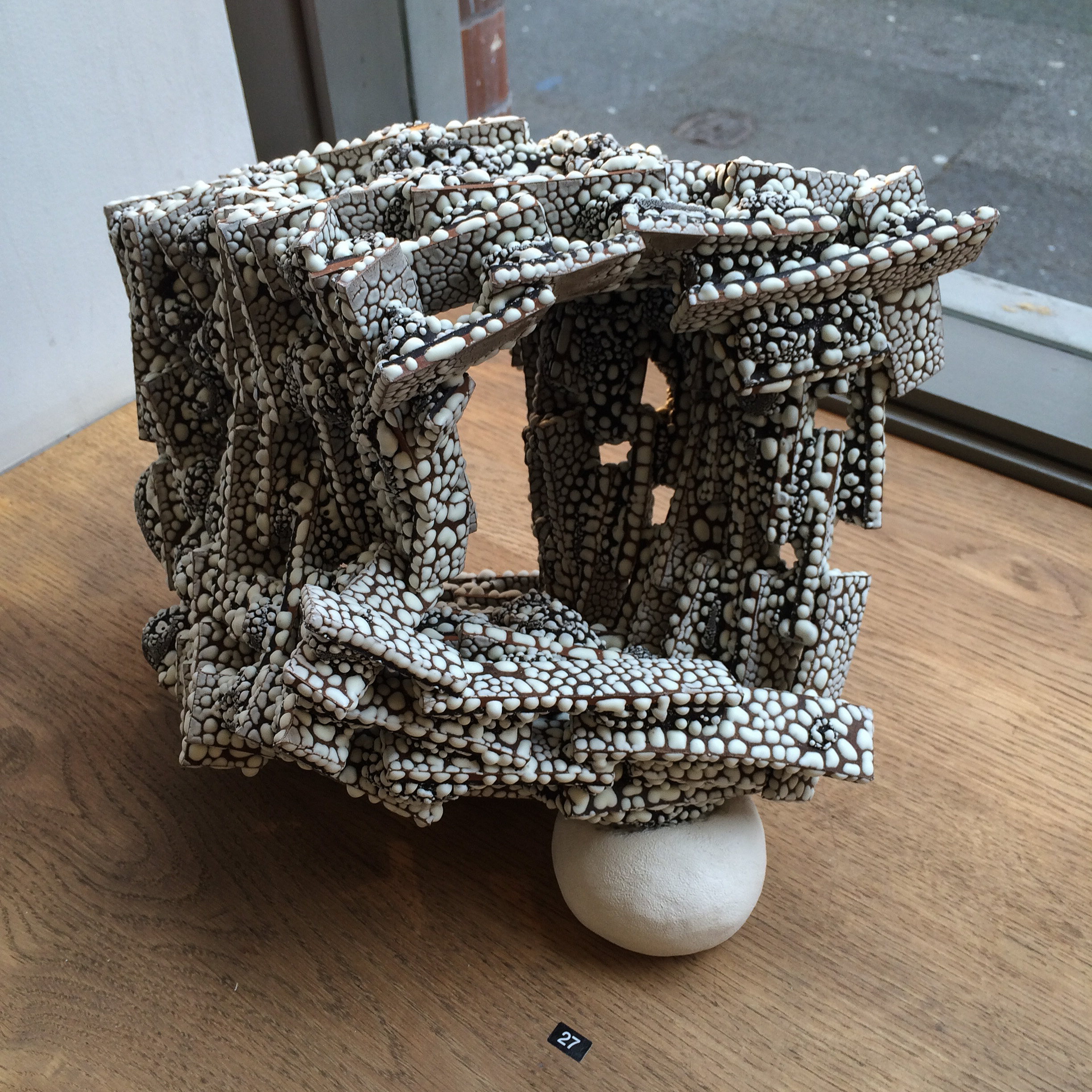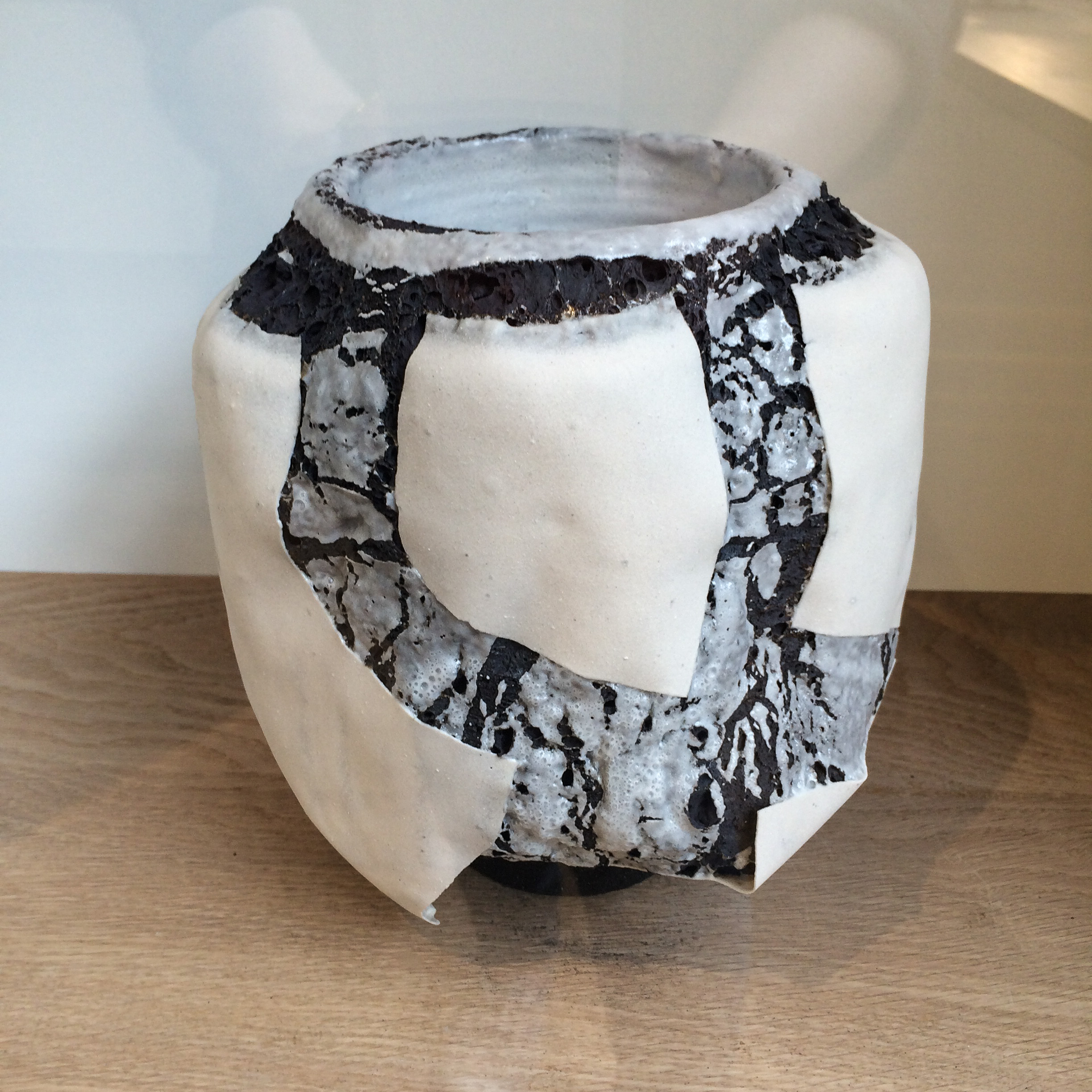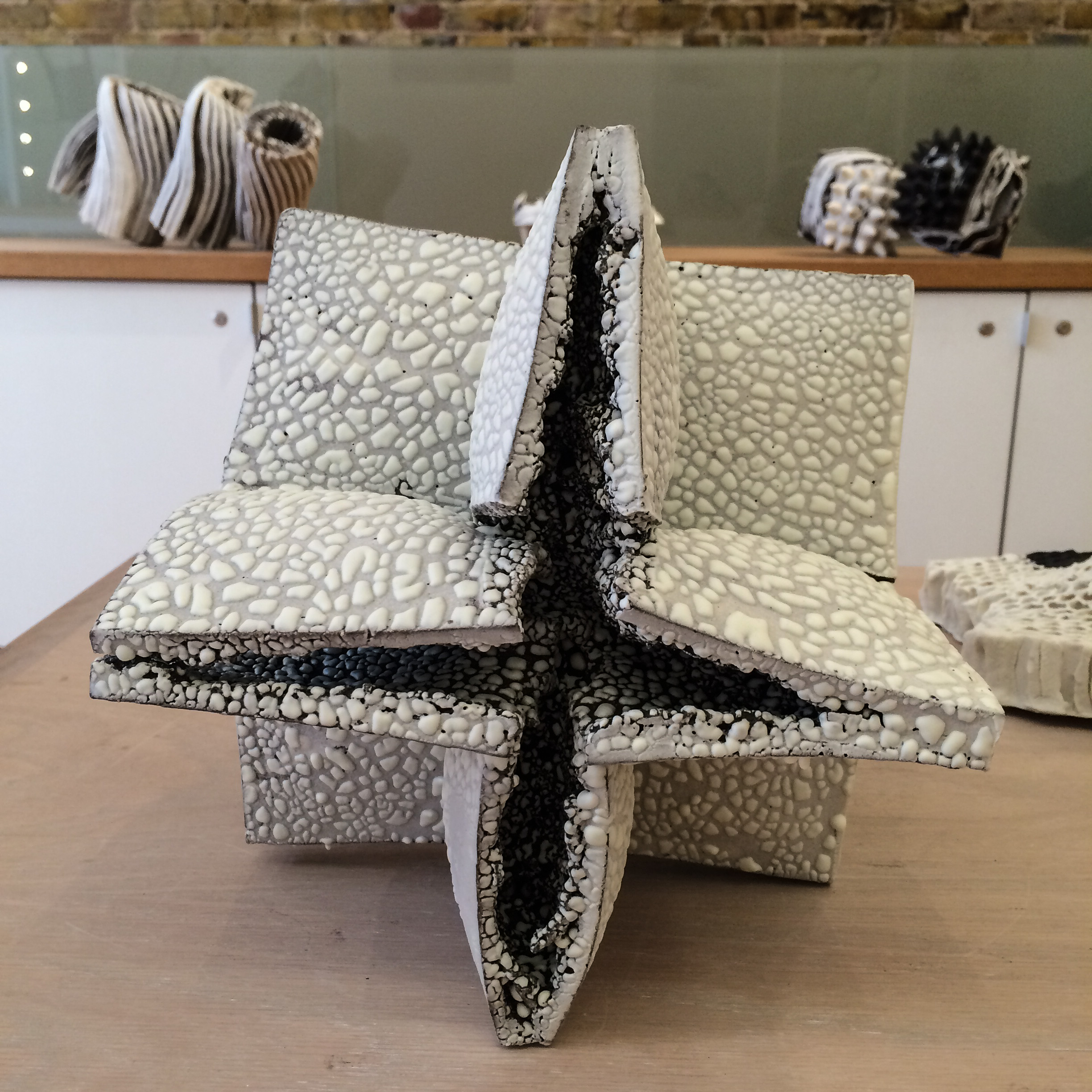London was bathed in sunshine yesterday and I spent a fine, if tiring, day visiting galleries, bookshops and sitting in cafés.
Among other things I caught the final day of an exhibition of sculptures by Rafael Pérez at the Contemporary Ceramics Centre:
“The driving force behind Pérez’s work is surprise and curiosity. He sees ceramics as an art form that offers a labyrinth of possibilities with infinite variables, making a viewer find their way through his pieces to search and explore. In recent years, his work has been focused on the desire to distance himself from the final object, on leaving the “authorship” as a matter shared between the fire and himself. The surprise of ‘non recognition’ between an object that goes into, and then comes out of the kiln, this ‘seeing with new eyes’ (as if the work was done by someone else) is what interests Pérez.”
Contemporary Ceramics Centre
Pérez cuts and layers clays with different properties, such as white porcelain and black earthenware. Some of these clays expand during firing, allowing the object to swell in the kiln. Layers peel apart. Surfaces crack. Forms twist and tear. The resulting forms are reminiscent of obscure archaeological objects – twisted, eroded and encrusted until only a sense of the original form remains. The layers were like book pages or layers of cloth in the process of coming apart from having been coiled and wrapped around each other.
Pérez says that with years of experience he can often predict what will happen but that invariably it is still a surprise with every firing … and it is this element of the unexpected that inspires him.
“… the backbone of my work has always been research and experimentation … I constantly pursue any sign, accident or occurrence with more of a sense of fun than scientifically …”
“ … test pieces clutter up my walls and shelves … but it is out of all this bustling, chaotic activity that my work springs. I am particularly interested in the “other use” of techniques and materials, maybe doing something wrong so as to discover new paths. I love the search in its own right and especially getting results which seem “alien” to me“
Rafael Pérez in Exhibition catalogue
Unexpectedly, this was a theme for the day. Earlier I had been to a discussion between Helen Carnac, who works with metal and enamel, and bookbinder, Tracey Rowledge, at Contemporary Applied Arts on the theme of how they manage, harness and embody “mistakes” in their work.
In summary, while Carnac feels that her work is all about the accidental, chance marks –“mistakes” – and not quite knowing what will come out of the kiln; Rowledge described a more problematic relationship with “mistakes”. On the one hand, mistakes in the construction of a book binding are a “no”, because they undermine its integrity. But on the other, she talked about looking for the unknown, the unexpected, because if the work is always “perfect” and predictable, there is something uninteresting about that and, what is more, your work never moves on.
In my own case, I love the accidental, unexpected marks and finding ways to approach the work so that I have less control and there is room for these accidental, unintended consequences is inherently more interesting to me. That's not the same as being “sloppy” – it’s important that the work is well finished. It’s a balance between practicing the knowledge and skill built up over years of experiment and practice and leaving room for the materials and process themselves to affect the outcome in ways I can’t completely control nor predict.




